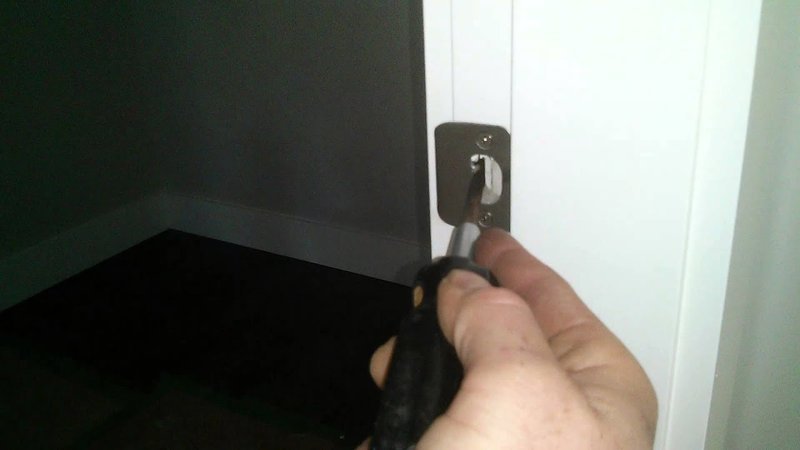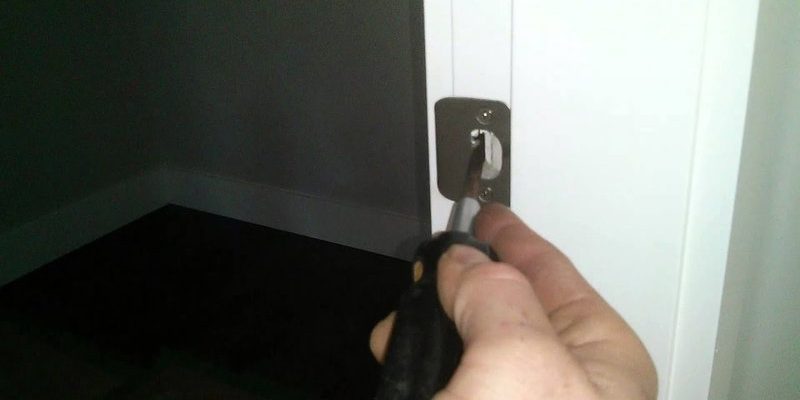
Let’s talk about how to adjust a door latch for a snug fit. Picture your door as a puzzle piece; if it’s not fitted just right, things can feel off. Whether you’re dealing with a wooden door that’s settled over time or a metal door that’s shifted due to temperature changes, making some simple adjustments can help. By following these steps, you’ll soon have a door that fits just right, preventing that annoying wobble.
Understanding the Door Latch Mechanism
To start, it’s essential to understand how a door latch works. When you turn the doorknob, the latch moves out of the strike plate and into the door frame. This action secures the door, keeping it closed. If things are misaligned, you might find the latch doesn’t engage properly, leading to the door wobbling.
Think of the latch as the handshake between your door and its frame. A firm handshake feels secure; a loose one feels awkward. If there’s too much space between the latch and the strike plate, it’s like a limp handshake that doesn’t inspire confidence. The goal is to have a snug fit so that when you close the door, it clicks smoothly into place.
Additionally, door latches can vary slightly based on the type of door hardware you have. This means that while the principles of adjustment are generally the same, pay attention to your specific setup, whether it’s a traditional knob or a modern handle.
Tools You’ll Need for the Adjustment
Before diving into the adjustment process, gather a few tools to make your job easier. Here’s what you’ll need:
- Flathead screwdriver – To remove or adjust screws on the latch mechanism.
- Phillips screwdriver – Useful for different screws on your door hardware.
- Measuring tape – To measure distances accurately between the latch and strike plate.
- Wood filler (if necessary) – For covering any gaps or holes that may need correction.
- Sandpaper – To smooth any rough edges if you adjust the latch plate.
Having these tools handy makes the process smoother, and you’ll feel more confident tackling the task head-on. Plus, it’s always good to be prepared!
How to Identify the Problem
Before making adjustments, you need to identify what’s causing your door to wobble. Here are some common signs:
1. Visible Gaps: If you notice a gap between the door and the frame, it indicates misalignment.
2. Difficulty Closing: If you have to shove the door to get it to close, that’s a clear sign something’s off.
3. Loud Noises: Squeaks or creaking sounds often mean the latch isn’t engaging properly.
Take a moment to observe your door. Is it sagging at one side? Does it seem to stick? Understanding these details will guide you in determining what specifically needs adjusting.
Adjusting the Strike Plate Position
If the latch isn’t meeting the strike plate correctly, adjusting the strike plate is often the first step. Here’s how to do it:
1. Loosen the Screws: Use your flathead or Phillips screwdriver to slightly loosen the screws holding down the strike plate.
2. Shift the Plate: Gently move the strike plate up or down. Often, moving it just a tad can make all the difference. If your latch is hitting too high, lower the plate; if it’s hitting too low, raise it.
3. Tighten the Screws: Once you’ve got it positioned correctly, tighten the screws back up. Close the door slowly to test if the latch engages smoothly.
If the latch still doesn’t fit snugly after this adjustment, don’t worry. There are more tweaks to explore.
Adjusting the Latch Itself
Sometimes, the latch mechanism needs a little fine-tuning. Here’s how to adjust it:
1. Remove the Latch Plate: Unscrew the latch plate from the edge of the door using your screwdriver.
2. Examine or Replace the Latch: Look for any wear or damage. If necessary, consider replacing the latch with a new one. If you can adjust it, look for screws on the latch mechanism itself that allow for height or depth adjustments.
3. Reattach: Position the latch plate in a way that aligns better with the strike. Secure it back into place.
This can seem tricky at first, but it’s like making small tweaks to get a pair of shoes just right—sometimes, a little adjustment can lead to a perfect fit.
Testing the Door After Adjustments
Now it’s time for the moment of truth: testing your door. Close it gently and observe how it feels. Is it smooth? Does it click into place nicely?
If the door is still wobbling, consider reviewing your previous adjustments again. Sometimes, it takes a couple of tries to get everything lined up perfectly. Additionally, if your door has settled over time, you might need to make further adjustments to the hinges.
It’s like tuning a musical instrument; sometimes you think you’ve nailed it, only to realize it needs just a bit more refinement.
Regular Maintenance Tips to Prevent Future Wobble
To keep your door in tip-top shape, consider these maintenance tips:
– Lubricate the Latch: Regularly apply a suitable lubricant to the latch. This prevents sticking and ensures smooth operation.
– Check Hinges: Inspect and tighten hinges periodically. Loose hinges can contribute to misalignment.
– Seasonal Adjustments: With changes in temperature, doors may expand or contract. Check your door at the beginning of each season to ensure it still closes properly.
By keeping an eye on these factors, you can prevent the wobble before it starts.
Closing the door snugly shouldn’t be a hassle. With just a few simple steps, you can adjust a door latch for a snug fit, ensuring your door closes securely and quietly every time. No more annoying wobbles—just a door that fits like a glove, providing you with peace of mind at home.
